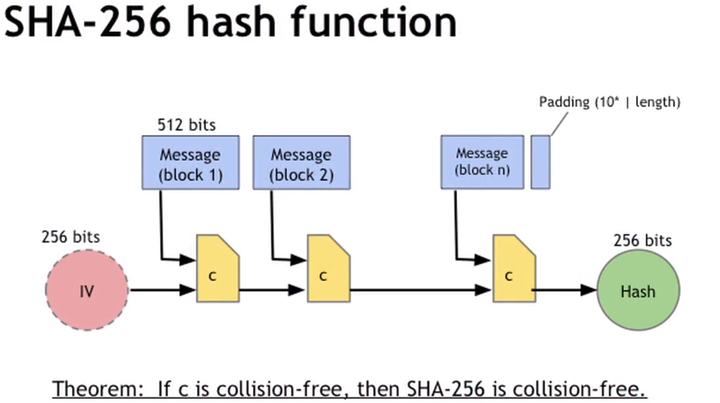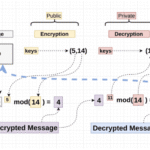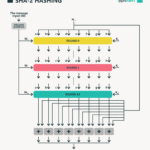SHA256, a member of the SHA-2 family of cryptographic hash functions, has garnered substantial acclaim for its robustness and security features. Designed by the National Security Agency (NSA) and introduced in 2001, it operates by producing a 256-bit hash value—an ostensibly unique and fixed-size representation of variable-length data. This quality allows SHA256 to play a pivotal role in various applications, ranging from digital signatures to blockchain technology. Despite its widespread acceptance, one fundamental question remains: Is SHA256 truly unique? This query leads us into the realm of hash collisions, a phenomenon that is essential for understanding the limitations and capabilities of hash functions.
To grasp the significance of hash collisions, we first need to delineate what a hash function is. In the simplest terms, a hash function takes an input (or ‘message’) and returns a fixed-size string of bytes. Any minor change in the input yields a drastically different output, a feature known as the ‘avalanche effect.’ Theoretically, for 32 bytes of output, as produced by SHA256, there are (2^{256}) possible hash values. This vast range conjures an image of uniqueness. However, the pigeonhole principle warns us: if you have more inputs than possible outputs, some inputs must share a hash value. Thus, the very concept of uniqueness is called into question.
Exploring the landscape of hash collisions, we encounter two primary types: accidental collisions, which are inevitabilities due to the finite range of outputs, and intentional collisions, which skilled adversaries may engineer through malicious intent. Accidental collisions can occur within any hash function, including SHA256, particularly as the number of inputs grows. Imagine a box overflowing with variously shaped pebbles—inevitably, some must share the same slot in the box.
On the spectrum of hash functions, SHA256 is considered resilient against intentional collisions, meaning its architecture makes it virtually infeasible for an attacker to find two distinct inputs that hash to the same output easily. No practical collision has been demonstrated in the wild as of now, showcasing its strength against such threats. However, theoretical vulnerabilities persist, and as computational capabilities advance, the prospect of discovering a collision looms closer on the horizon.
The cryptographic community has placed SHA256 under scrutiny, and the potential for weaknesses has triggered ongoing research. Notably, the cost of computing power, and the exponential growth of technology, present a significant concern. In 2020, researchers demonstrated that an adversary could produce a collision with SHA1, a predecessor to SHA256, relatively efficiently. This event not only spotlighted the weaknesses of SHA1 but also raised alarms regarding the security margins in other hash functions. While no equivalent vulnerability has been established for SHA256, the landscape of cryptography is ever-evolving.
It is essential to analyze the implications of hash collisions beyond mere theoretical discourse. The realm of blockchain technology intricately links to this topic. Each block in a blockchain is hashed using SHA256, contributing to the chain’s integrity. If a collision were to occur, it could lead to counterfeit transactions or a double-spending problem—where a malicious actor spends the same cryptocurrency twice. Such scenarios underscore the weighty implications of hash functions in decentralized systems. Thus, understanding SHA256 is not merely an academic curiosity; it holds tangible ramifications.
Additionally, real-world examples exist which highlight the necessity of robust hashing mechanisms. The infamous instance surrounding the MD5 and SHA1 hash functions serves as a cautionary tale. Considered secure in their prime, both algorithms eventually succumbed to vulnerabilities, leading to their decline in use. The digital landscape is littered with the corpses of compromised hash functions. A future where SHA256 suffers a similar fate cannot be dismissed lightly.
Moreover, one cannot overlook the impact of quantum computing on hash functions. Quantum algorithms, particularly Grover’s algorithm, introduce the prospect of ‘quantum attacks’ against traditional cryptographic systems. While SHA256 is deemed robust under current technologies, the arrival of quantum computing may necessitate reevaluating its security. Analysts posit that a sufficiently advanced quantum machine could effectively halve the bit strength of hash functions, placing SHA256 at a theoretical risk of being exposed to collision attacks.
In light of these contemplations, it becomes evident that while SHA256 exhibits formidable security features and unique output capabilities, one must remain vigilant about hash collisions. Accidental collisions are unavoidable; intentional collisions, via groundbreaking adversarial techniques, remain a palpable risk. This reality serves as a reminder of the dynamic nature of cryptography, requiring a continuous appraisal of existing standards and the proactive development of next-generation hash functions.
To encapsulate, while SHA256 remains a cornerstone in cryptographic applications, proclaiming it as unequivocally unique is a misnomer. As we continue to navigate the complexities of cybersecurity, understanding the potential ramifications of hash collisions is indispensable. In an age where data security is paramount, remaining informed about these nuances—not only enhances technical knowledge but fortifies our digital landscape against the shadows of cryptographic vulnerabilities.









Leave a Comment